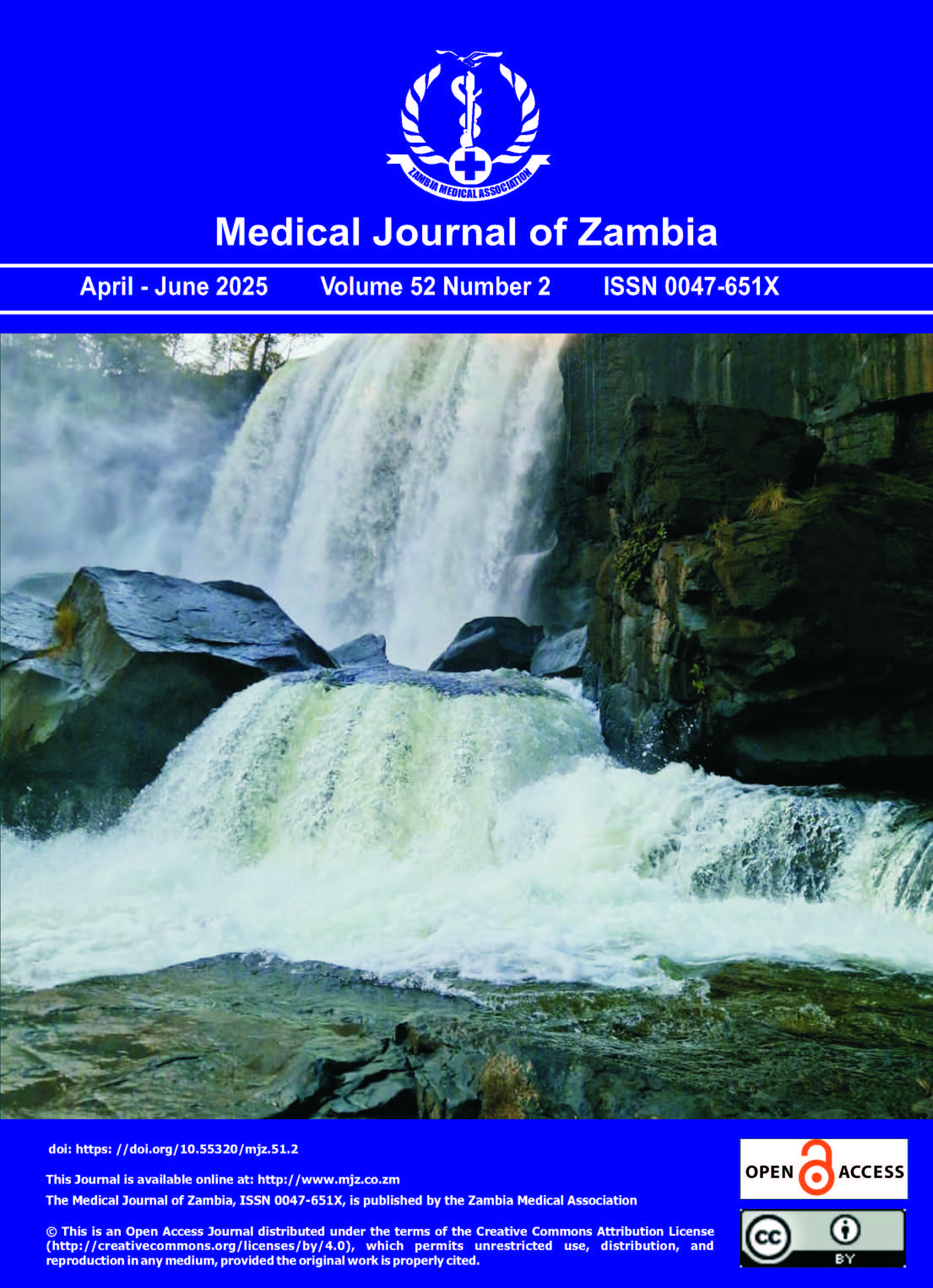Cerebral Hydatid Cyst Management in a Sub-Saharan Setting: A Zambian Case Series
DOI:
https://doi.org/10.55320/mjz.52.2.655Keywords:
Echinococcus, neurosurgery, neglected tropical disease , Zambia, cerebral hydatid cystAbstract
Background: Human echinococcosis, a zoonotic disease caused by Echinococcus spp., is a neglected tropical disease with significant morbidity. Cerebral hydatid cysts, accounting for 3–4% of all intracranial space-occupying lesions, are predominantly seen in children and young adults, often affecting the parietal lobe. While hydatid disease is endemic in various regions, documented cases of cerebral hydatid cysts in Zambia are scarce.
Methods: This case series presents five patients diagnosed and managed for cerebral hydatid cysts at the University Teaching Hospital (UTH) and Levy Mwanawasa University Teaching Hospital (LMUTH) in Lusaka, Zambia. Clinical presentations, radiological findings, surgical interventions, and outcomes were analyzed to highlight diagnostic challenges and management strategies in a low-resource setting.
Results: The five cases included male patients aged 29 to 67 years, presenting with neurological deficits, seizures, and headaches. Brain imaging revealed well-defined, non-enhancing cystic lesions, predominantly bi-lobed, with varying mass effects. Three patients underwent craniotomy for cyst excision, while one received only a ventriculoperitoneal shunt due to hydrocephalus. Histopathological analysis confirmed hydatid disease in all surgical cases. Surgical removal was successful in all operated patients, with no postoperative complications. One patient absconded before surgical intervention.
Conclusion: Although rare, cerebral hydatid cysts are a recognized neurosurgical pathology in Zambia. Early diagnosis through imaging and prompt neurosurgical intervention are crucial for favorable outcomes. This case series underscores the need for heightened clinical suspicion, especially in endemic regions, and emphasizes the challenges faced in low-resource healthcare settings.
Downloads
Downloads
Published
Issue
Section
License
Copyright (c) 2025 Medical Journal of Zambia

This work is licensed under a Creative Commons Attribution-NonCommercial 4.0 International License.









